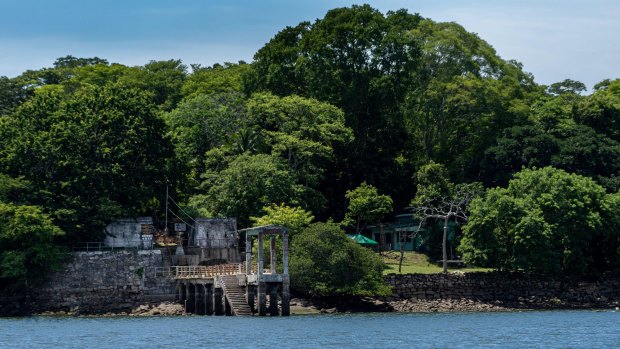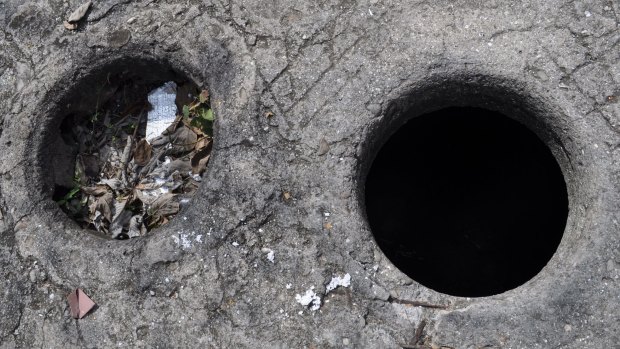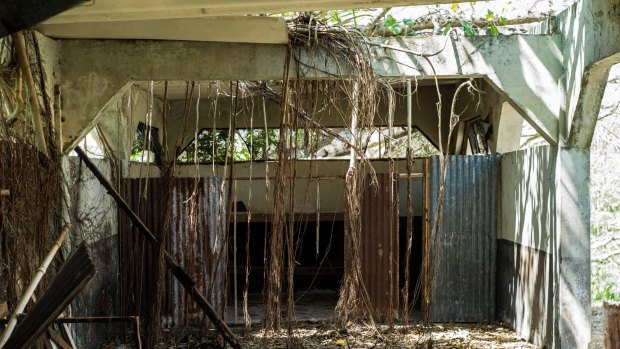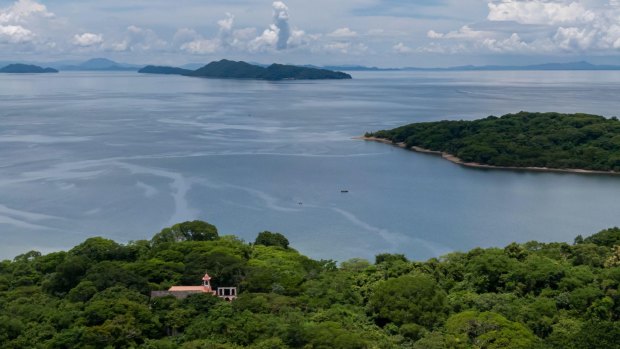This was published 1 year ago
San Lucas Island, Costa Rica: The notorious prison island that has been given back to nature

Forty years since San Lucas was shuttered as a prison, it has been reopened as Costa Rica's 30th, newest, and perhaps most singular national park. Credit: Alamy
"San Lucas Island?" My driver seemed a little incredulous, but of course he knew where it was. "My grandfather did six months there for bootlegging. But why are you going?"
I was asked this while being transferred to a car rental office in Costa Rica's capital, San Jose. My plan was to drive from there to Punta Arenas, a port town in the west of the country, where I would take the 15-minute fast boat to San Lucas Island, a former penitentiary. Now, 40 years since it was shuttered as a prison, it has been reopened as Costa Rica's 30th, newest, and perhaps most singular national park.
After a period of deforestation in the 1970s, the island is again a green place – from the calm waters of the Nicoya Gulf, plants appear to stampede over each other to reach the sky.

El Disco (The Disc) – a failed well into which prisoners would be thrown through a narrow hole to endure torture by dehydration. Credit: Alamy
Understandably, the on-island rangers' focus is primarily on cultural and historical legacy, rather than nature. When I stepped ashore, time was taken to explain that the system wasn't all punitive and got progressively more humane as the years rolled by. "It's a place that lets you think two things: about all that has happened and that a new history can be built," said Olger Nunez Jimenez, the park's administrator and head ranger. "Instead of being sad, it's a place that allows reflection."
The more years distant we are from prison islands, the more benign and even romantic they can seem. The most obvious example of this is Alcatraz, with its "Birdman" Robert Stroud, its did-they-didn't-they escape stories, and the portly ghost of Al Capone. Similarly, the prisoner Henri Charriere's Papillon – a highly fictionalised account of life on French Guiana's Devil's Island – was deemed exciting enough that it was made into a Hollywood movie, twice.
How then to regard San Lucas? Its infamous prison was only closed in 1991 then abandoned for a decade before being declared a wildlife reserve in 2001. Despite, or because of, its sinister history, in August 2020 it was upgraded to a national park.

Vines overtake a medium security area in the prison.Credit: Alamy
Yet there are still plenty of reminders of its awful past. Perhaps its most repugnant cell is El Disco (The Disc) – a failed well into which prisoners would be thrown through a narrow hole to endure torture by dehydration. Climbing down inside it, I noticed invasive tree roots looking for water they would not find, and beside them, an etching of what appeared to be a flower straining towards the light. Even without official capital punishment, I wondered how many men found death here anyway? How many wished they'd faced the hangman rather than this?
Built in 1873, at its peak San Lucas housed 600 prisoners, though this was reduced to 320 of the most dangerous when water supplies began to run low at the start of each dry season. Jimenez told me that the idea for the prison was copied from Napoleon's French Guiana model, a "hell in paradise" patrolled by sharks as much as guards, where incarceration and abuse of prisoners were equally hidden from the public.
Owing to the pandemic, I was one of the first foreign visitors since the island was declared a national park. The rebranding is significant but hasn't marked the start of tourism – in the early 1900s mainlanders would come out to see prisoners, not for personal visits but on what amounted to human safaris. Family members only began to be allowed to do the same in the 1970s.

After a period of deforestation in the 1970s, the island is again a green place.Credit: Alamy
Of the most notorious men held here, Beltran Cortes Carvajal was the most requested by these dark tourists, who would pay to travel from Punta Arenas to have an audience with the serial killer. Though it's tempting to sneer at those vampires, it would be disingenuous to pretend that I hadn't been partly drawn to the island by the same impulse, not to look the man in the eye, but chase the thrill of his horror story.
Standing outside Carvajal's old cell – which would get so hot it was known as La Plancha (The Iron) – Jimenez recounted the prisoner's wild tale of murder, mutilation, revenge, more murder, and decades-long case of syphilis. Peering into the gloom of his squalid dungeon, hanging bats spinning in some unfelt breeze, I too found myself pining for free air. Costa Rica's other national parks offer many experiences, but nothing quite like this.
THE DETAILS
FLY
United Airlines fly to San Jose via Los Angeles from both Melbourne and Sydney. See united.com
TOUR
Journey Latin America offers an 11-day holiday to Costa Rica visiting San Jose, Arenal, Monteverde, San Lucas Island and the Nicoya Peninsula, from $5797 a person. The price includes transfers, first class hotels, excursions and most meals. See journeylatinamerica.com
Sign up for the Traveller Deals newsletter
Get exclusive travel deals delivered straight to your inbox. Sign up now.